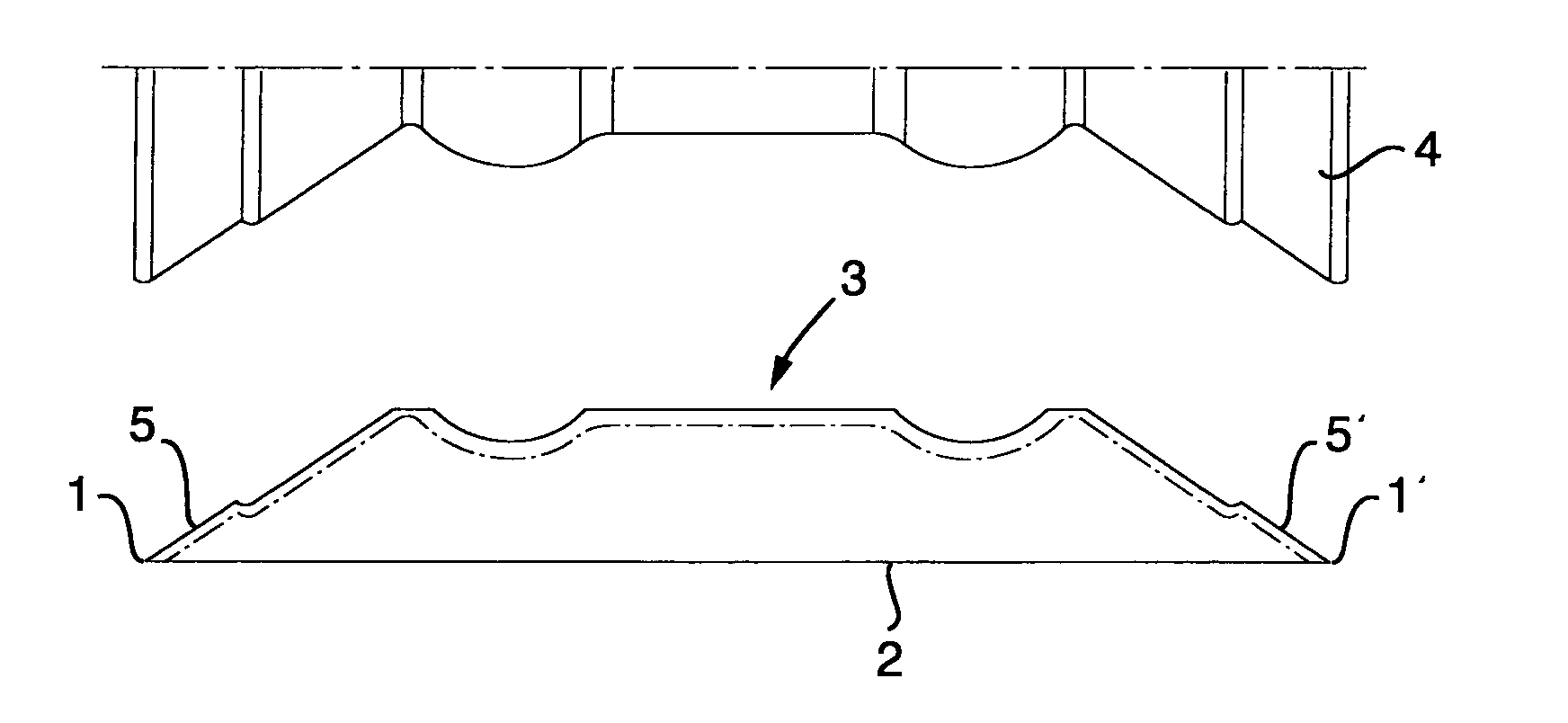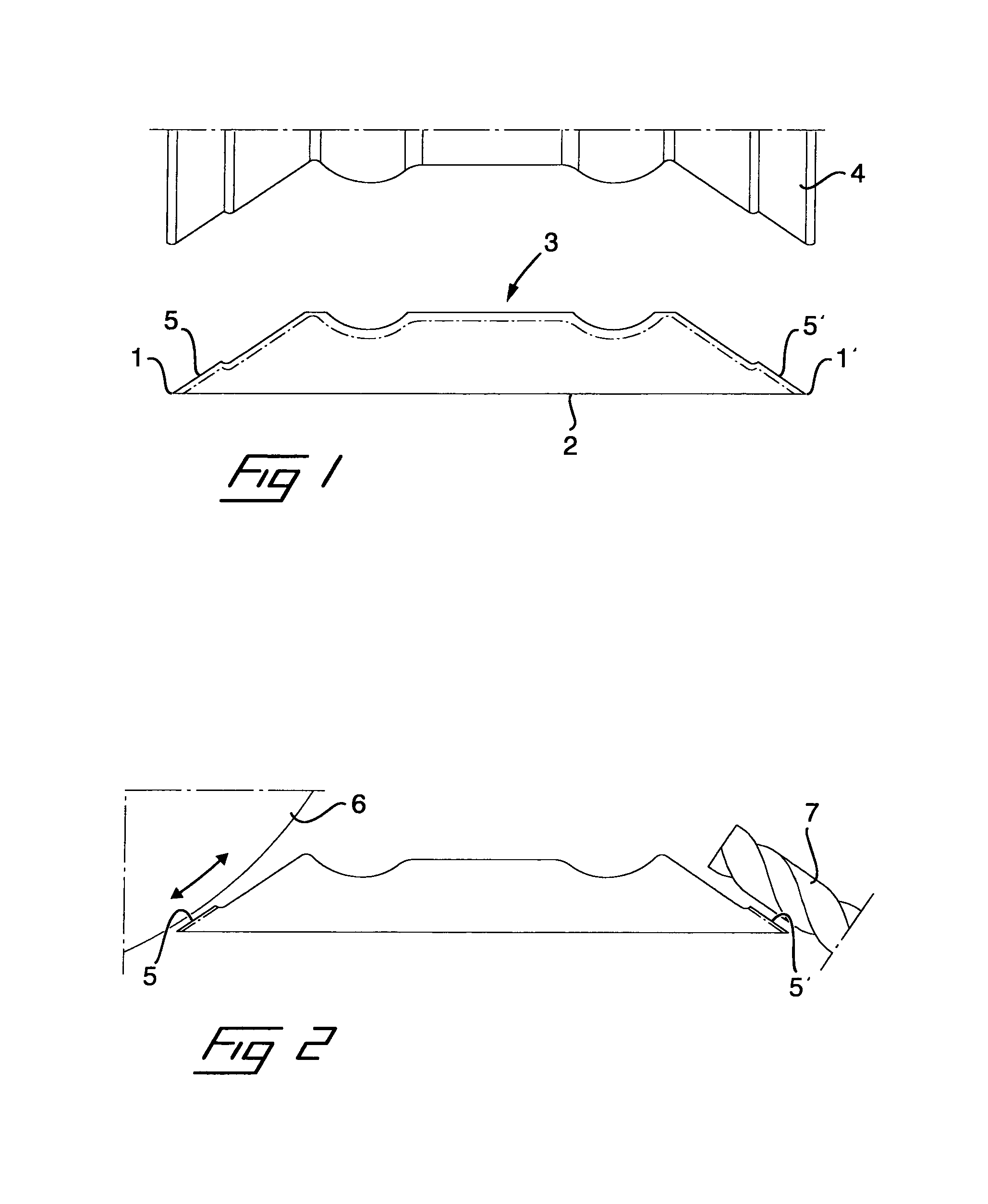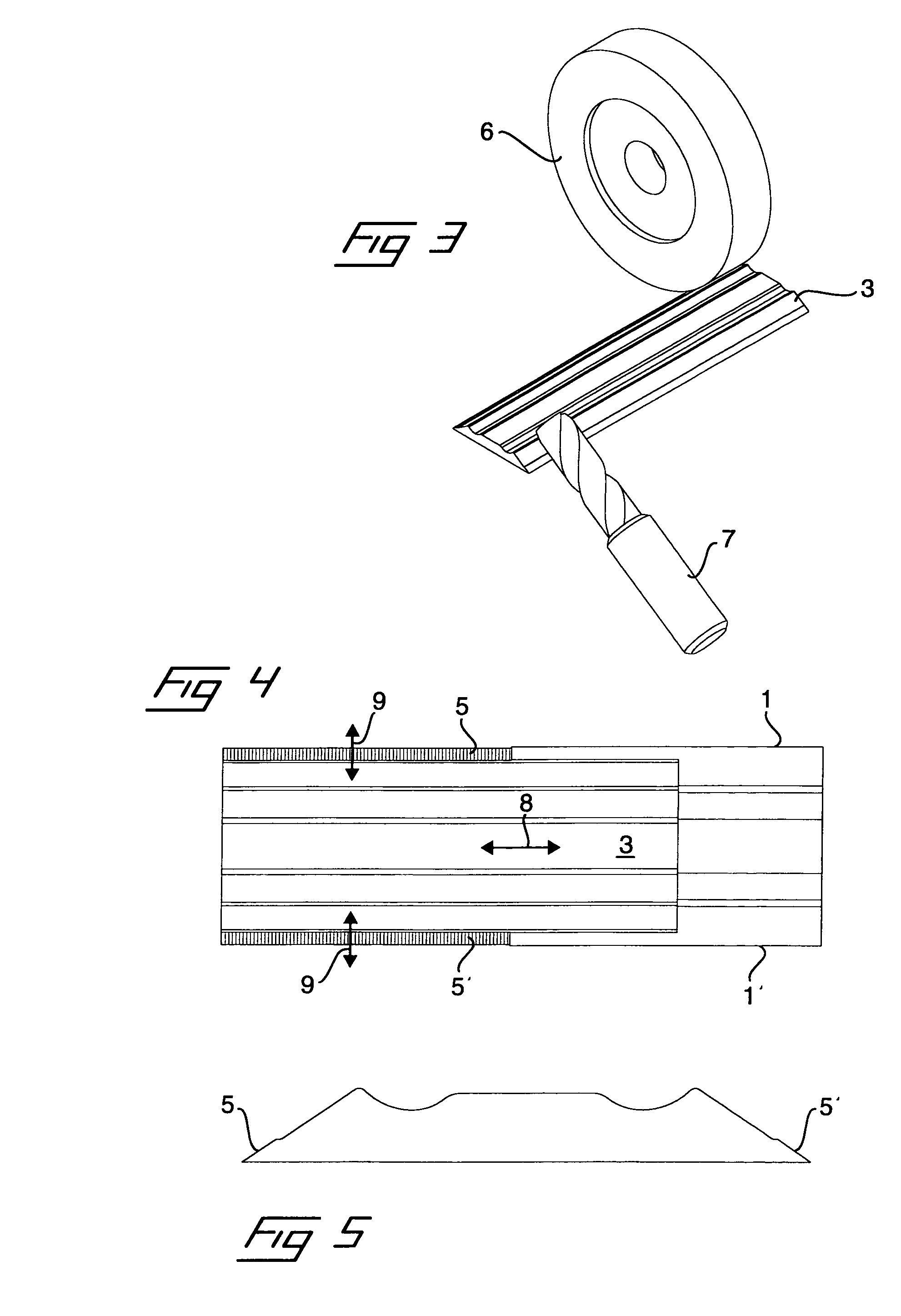Chipper knife and method of manufacturing a chipper knife
a technology which is applied in the field of chipper knife and manufacturing method of chipper knife, can solve the problems of small but significant working stripes of the chipper knife parallel to the cutting edge, increased strain on the chipper knife and the rest of the chipper, and lower chip quality
- Summary
- Abstract
- Description
- Claims
- Application Information
AI Technical Summary
Benefits of technology
Problems solved by technology
Method used
Image
Examples
Embodiment Construction
[0025]FIGS. 1-6 illustrate a chipper knife which has two cutting edges 1, 1′. The chipper knife has a completely flat underside 2 while an upper side 3, which is adapted to be oriented toward a wood side, has a profiled shape in cross-section. The respective cutting edges 1, 1′ are formed between the underside 2 and a bevelled surface on the upper side.
[0026]FIG. 1 illustrates a blank for the chipper knife, which can be made, for example, by rolling, and which has a certain oversize relative to the shape of the completed chipper knife as indicated by a dash-dotted line. The final shape of the upper side is obtained, in the shown embodiment, by deep feed grinding by means of a rotating grinding wheel 4 which rotates in a plane parallel to the longitudinal extent of the clipper knife and which has a profiled shape that conforms with the desired shape of the upper side of the chipper knife. In grinding, the chipper knife will obtain shallow but characteristic working stripes in its lon...
PUM
| Property | Measurement | Unit |
|---|---|---|
| angle | aaaaa | aaaaa |
| angle | aaaaa | aaaaa |
| thickness | aaaaa | aaaaa |
Abstract
Description
Claims
Application Information
 Login to View More
Login to View More - R&D
- Intellectual Property
- Life Sciences
- Materials
- Tech Scout
- Unparalleled Data Quality
- Higher Quality Content
- 60% Fewer Hallucinations
Browse by: Latest US Patents, China's latest patents, Technical Efficacy Thesaurus, Application Domain, Technology Topic, Popular Technical Reports.
© 2025 PatSnap. All rights reserved.Legal|Privacy policy|Modern Slavery Act Transparency Statement|Sitemap|About US| Contact US: help@patsnap.com



